This is a preprint.
Enhancer activation from transposable elements in extrachromosomal DNA
- PMID: 39282372
- PMCID: PMC11398463
- DOI: 10.1101/2024.09.04.611262
Enhancer activation from transposable elements in extrachromosomal DNA
Abstract
Extrachromosomal DNA (ecDNA) is a hallmark of aggressive cancer, contributing to both oncogene amplification and tumor heterogeneity. Here, we used Hi-C, super-resolution imaging, and long-read sequencing to explore the nuclear architecture of MYC-amplified ecDNA in colorectal cancer cells. Intriguingly, we observed frequent spatial proximity between ecDNA and 68 repetitive elements which we called ecDNA-interacting elements or EIEs. To characterize a potential regulatory role of EIEs, we focused on a fragment of the L1M4a1#LINE/L1 which we found to be co-amplified with MYC on ecDNA, gaining enhancer-associated chromatin marks in contrast to its normally silenced state. This EIE, in particular, existed as a naturally occurring structural variant upstream of MYC, gaining oncogenic potential in the transcriptionally permissive ecDNA environment. This EIE sequence is sufficient to enhance MYC expression and is required for cancer cell fitness. These findings suggest that silent repetitive genomic elements can be reactivated on ecDNA, leading to functional cooption and amplification. Repeat element activation on ecDNA represents a mechanism of accelerated evolution and tumor heterogeneity and may have diagnostic and therapeutic potential.
Figures



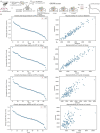


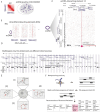
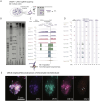
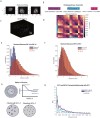
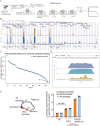
Similar articles
-
Chromatin-associated RNA Dictates the ecDNA Interactome in the Nucleus.bioRxiv [Preprint]. 2023 Jul 27:2023.07.27.550855. doi: 10.1101/2023.07.27.550855. bioRxiv. 2023. PMID: 37547001 Free PMC article. Preprint.
-
Extrachromosomal DNA Amplification Contributes to Small Cell Lung Cancer Heterogeneity and Is Associated with Worse Outcomes.Cancer Discov. 2023 Apr 3;13(4):928-949. doi: 10.1158/2159-8290.CD-22-0796. Cancer Discov. 2023. PMID: 36715552 Free PMC article.
-
Reconstructing extrachromosomal DNA structural heterogeneity from long-read sequencing data using Decoil.Genome Res. 2024 Oct 11;34(9):1355-1364. doi: 10.1101/gr.279123.124. Genome Res. 2024. PMID: 39111816 Free PMC article.
-
Progress on the role of extrachromosomal DNA in tumor pathogenesis and evolution.Clin Genet. 2021 Apr;99(4):503-512. doi: 10.1111/cge.13896. Epub 2020 Dec 19. Clin Genet. 2021. PMID: 33314031 Review.
-
Extrachromosomal DNA in Cancer.Annu Rev Genomics Hum Genet. 2022 Aug 31;23:29-52. doi: 10.1146/annurev-genom-120821-100535. Epub 2022 May 24. Annu Rev Genomics Hum Genet. 2022. PMID: 35609926 Free PMC article. Review.
References
-
- Yan X., Mischel P. & Chang H. Extrachromosomal DNA in cancer. Nat Rev Cancer 24, 261–273 (2024). - PubMed
-
- Wahl G.M. The importance of circular DNA in mammalian gene amplification. Cancer Res 49, 1333–40 (1989). - PubMed
-
- Benner S.E., Wahl G.M. & Von Hoff D.D. Double minute chromosomes and homogeneously staining regions in tumors taken directly from patients versus in human tumor cell lines. Anticancer Drugs 2, 11–25 (1991). - PubMed
Publication types
Grants and funding
LinkOut - more resources
Full Text Sources
